kind of like a "please touch museum" of obscure instruments!
This was my third Early Music Fest and since 2008, I consider the concert one of the key events of each year that I assuredly look forward to attending.
Note: I could be mistaken concerning the names, titles and dates in certain instances. I will be glad to receive any guidance leading to corrections in these areas.

01. Musica Dolce: The group known as Musica Dolce opened the Festival with the distinctive and delightful sounds of Georg Philipp Telemann, the great late seventeenth-/early-to-mid eighteenth-century German composer, in a piece titled "Trio In G Minor", the Allegro of which featured a very nice breakdown with dueling harpsichord and recorder with the cello and violin playing along. They continued with "Sonata In G Opus 1 Number 6" by Jean-Baptiste Loeillet - a calm piece with each instrument complementing the other. I noticed one man in the audience sitting with his eyes closed taking in the sounds of this eighteenth-century composition. I myself have done that in concerts past ... the mood of song compels one to drift away. The next part of the piece, the first of two Allegros, featured an increase in the pace and audio of the instrumentation. The aforementioned man naturally opened his eyes for this part, haha. The final Allegro enabled listeners to envision a circle dance in an old court. Indeed a very lively number. With that, Musica Dolce was finished and they bid farewell to the crowd.
Musica Dolce at the conclusion of their set:
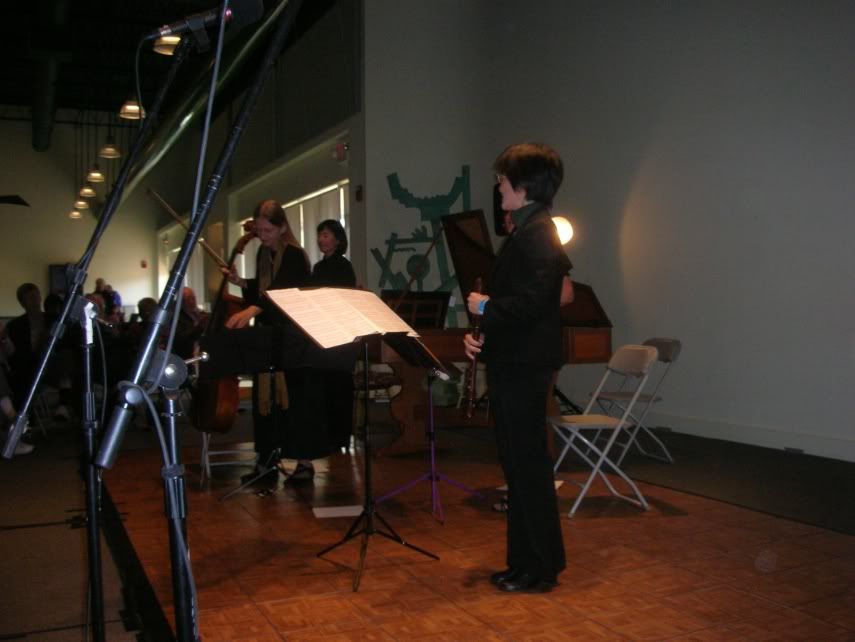
02. Armonia: Armonia featured a group of musicians performing songs from the Medieval Period that are French, English and Spanish in origin. The first selection of their set was from a French Codex (possibly dubbed the Montia Codex) and titled "Mantevera Pia" (I could not find a record of this; I am sure the spelling is not correct). Initially the song began with only a harp and vocal and was later accompanied by the sounds of a large recorder. The second number was a fourteenth-century composition pertaining to the Heavenly Queen. Next up was a thirteenth-century French piece, the subject of which is not commonly encountered and is quite historic to us today. It is about a woman whose husband was fighting in The Crusades. One line proclaiming "God when they shoot forward help the pilgrim whom I tremble". This was followed by a piece from twelfth-century Spain - a hymn to the Virgin Mary. The song was performed a cappella much the way it was when originally sung by Nuns. The harp was brought out for the next one ... a tune about happiness. The band played a few other Medieval songs allowing the crowd to take a journey into the past. The closing sentiment was "No matter what anyone says, I will love". The fans were treated with the sights and sounds of seldom-seen instruments such as the hurdy gurdy and a small white item resembling a blow horn or horn bugle.
The video below shows the hurdy gurdy and white horn being played while the vocalist sings the lyrics:
03. Le Triomphe De L'amour: The third act in the concert was Le Triomphe De L'amour. The two person-strong act performed the music of German composer Georg Friedrich Händel. The first number was called "La Folia" from Händel's "Suite In D Minor For Harpsichord And Recorder". The combination of the harpsichord and recorder is a personal favorite of mine - the complement each other very well. John and Janet did a fine job on the four movements of the Suite. In the times I have seen John in the past, he has always incorporated brief historical background to his pieces he performs and he continued the tradition by mentioning distributing agents in London. He also dicussed a publisher named John Walsh who pioneered offering free samples to the public. Next in the set was "Gentle Air" followed by an aria pertaining to the Egyptian Queen Cleopatra. The harpsichord and recorder were a delightful pair and took the audience back to the merriment of eighteenth-century faire.
Here are a video sample of the set and a photo of the group:
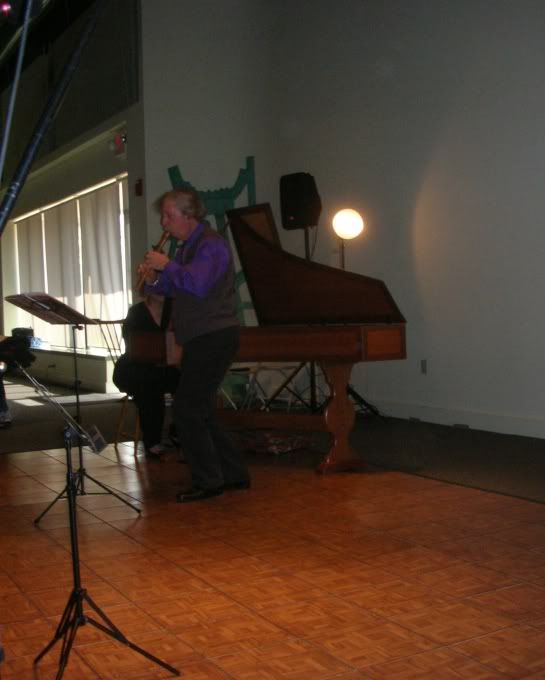
04. La Spirita: The five-piece ensemble of ladies calling themselves La Spirita played seventeenth and eighteenth-century music from France and England. The first selection pertained to the age-old topic of unrequited love. Gossip and jealously were the themes of the next selection. Whereas the first two numbers featured vocals and four stringed instruments, the third song was performed as a five-piece instrumental allowing listeners to take a journey back in time. Next up was "Fantasy" by Welsh-born Thomas Tomkins. The introduction of the song was an explanation of its flow ... a theme will start with one instrument and other instruments will join in followed by another theme. I believe the next song was titled "Mery Conceit" - it featured dueling large violas. Quite nice. A modern number was performed next - from what I recall, it was "Two Dances" by a modern composer by the name of William. This individual's life spans the twentieth and
twenty-first centuries, but the song was fabulous and captured the feeling of the Baroque Era. A piece about Spring (research shows it may have been titled "Revecy Venir Du Printemps") by the sixteenth-century Franco-Flemish composer Claude Le Jeune was next. The final song from La Spirita was a march from an opera. It included a hand-held drum. Their website: http://www.laspiritaviols.org
La Spirita:
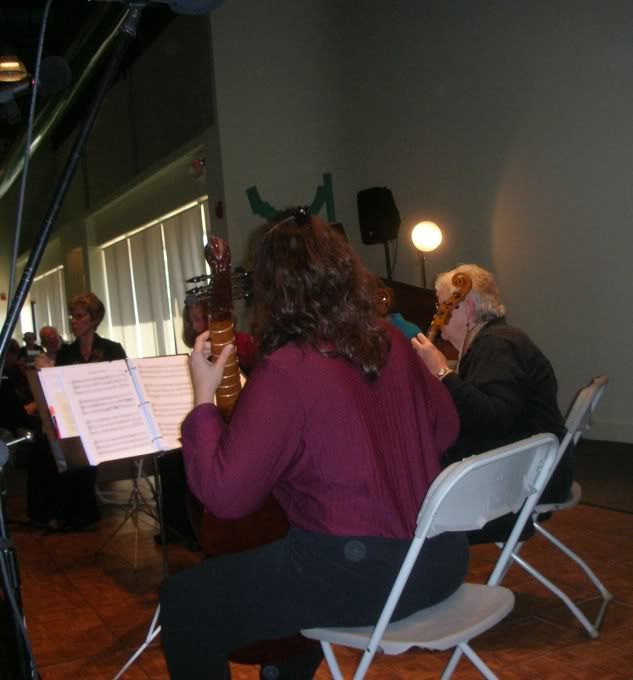
05. Princeton Recorder Society: The eight-member group did not discuss any of the songs in their set so the titles and historic information were completely unbeknown to me. The first number featured seven recorders played simultaneously to the motions of a conductor. What appeared to me to be the second part of the song had a change in tempo. A very happy arrangement ... positive in feeling. The next selection began and continued with seven recorders in unison ... quite pleasing to the senses. A wonderful tune closed their set and the band walked off after announcing they are accepting new members. Details can be found at this link - http://www.princetonol.com/groups/princetonrecorder
A photo and then two videos from the group:
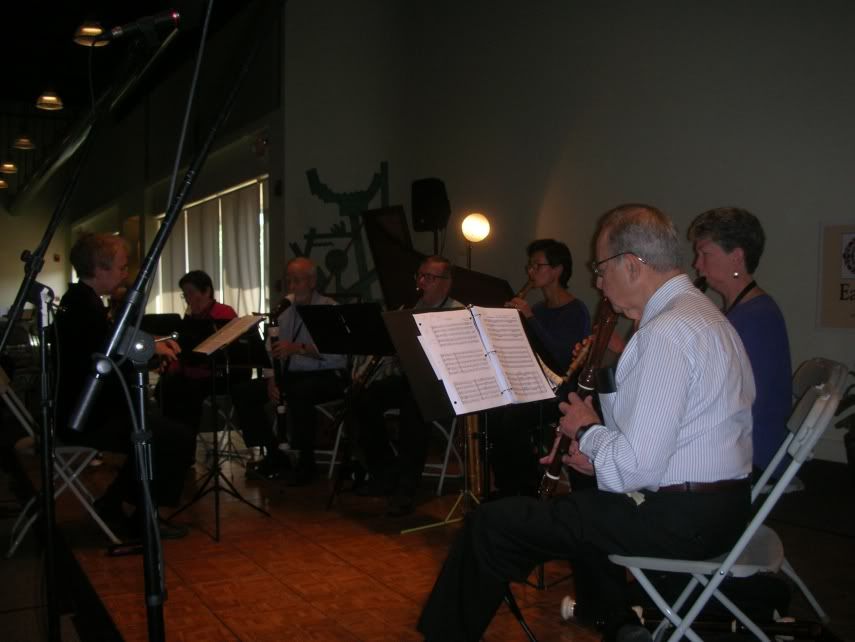
There was a delay at this point in the festival so I used the break to walk onto the grounds to see if I could find the strolling singers called Vox Fidelis.
I unfortunately did not run into them, but I did stumble upon some glamorous and engaging peacocks!
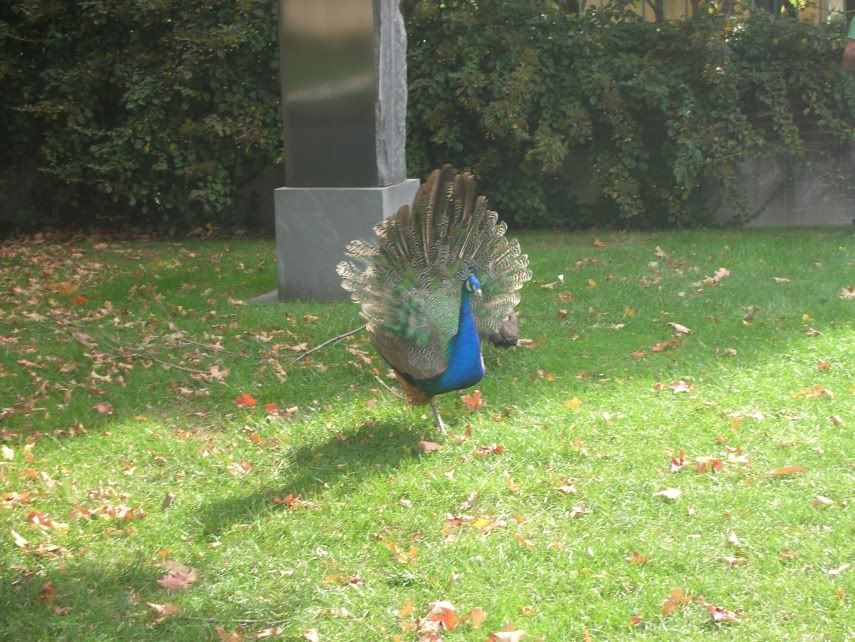
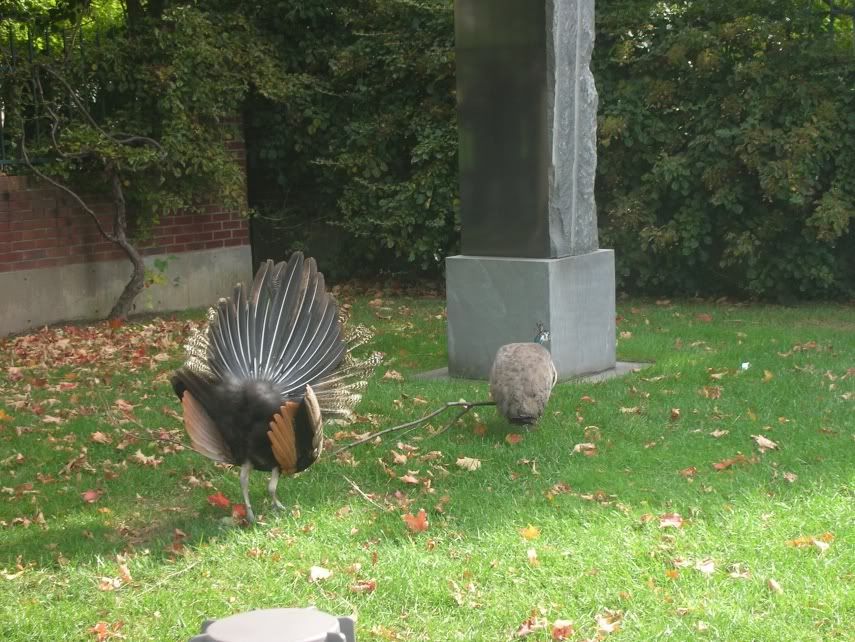
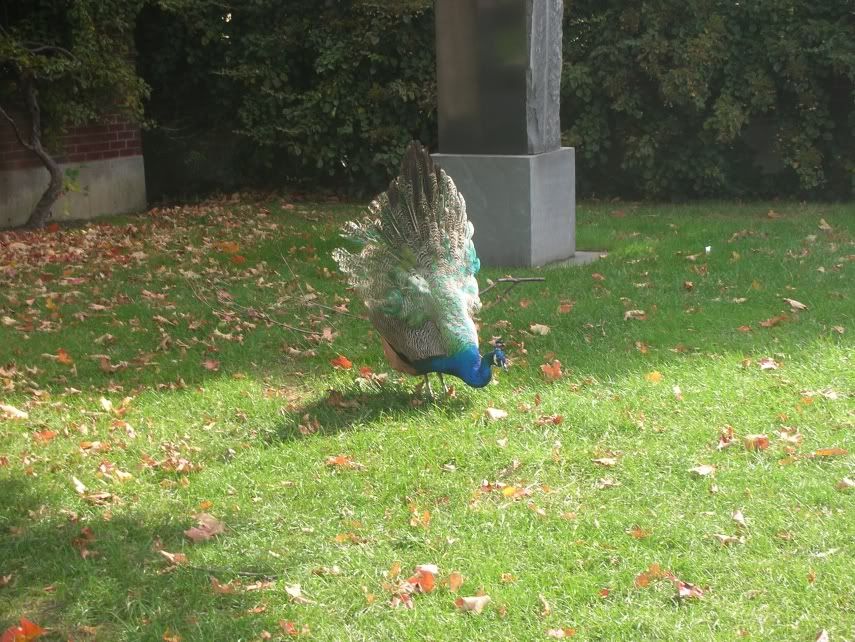
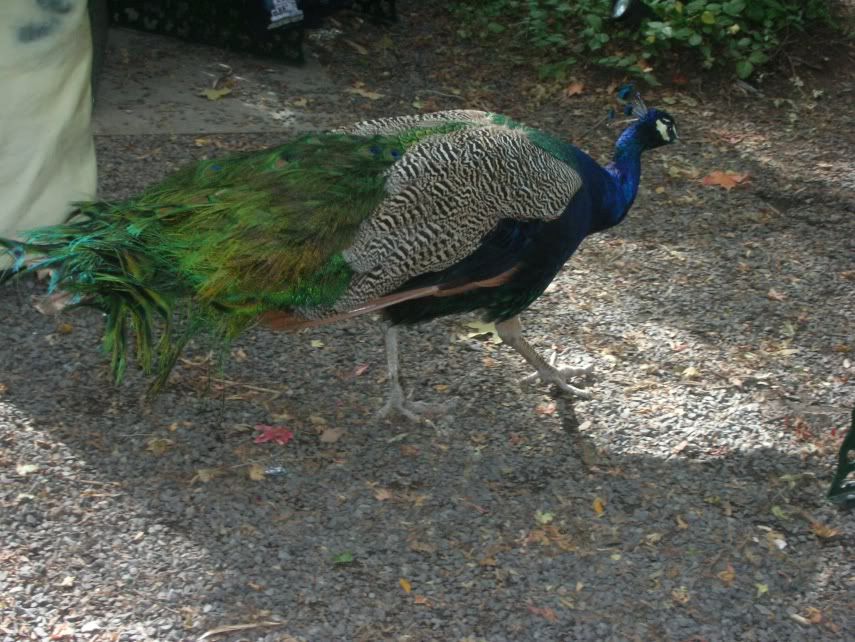
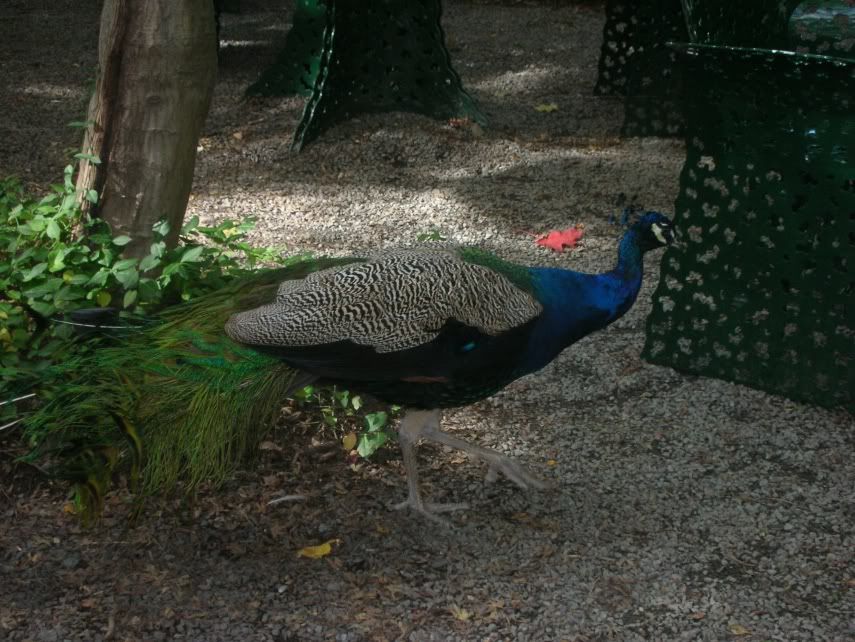
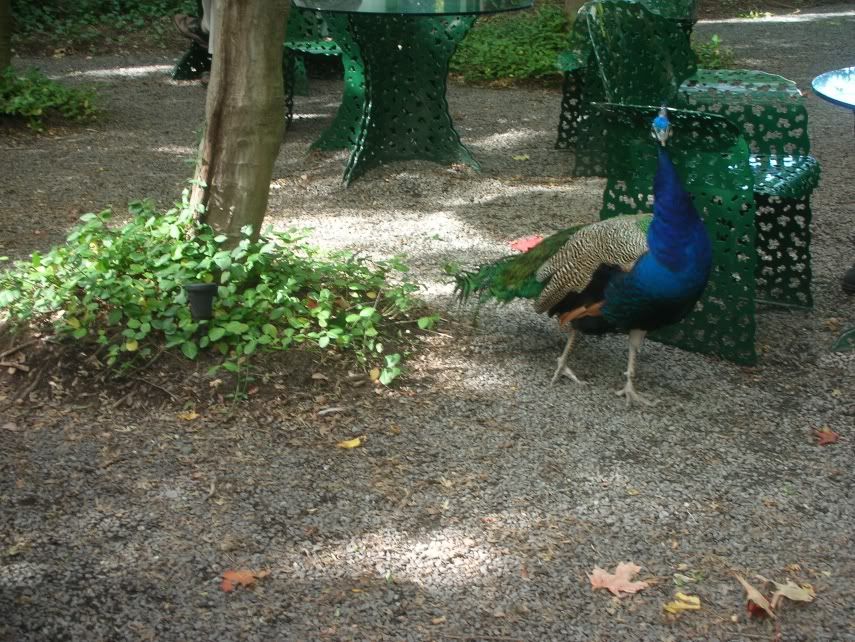
06. La Fiocca: La Fiocca consists of a vocalist and three other musicians who play the harpsichord, viola and recorder. I walked in to hear a song in progress. The next piece I heard featured a fine harpsichord solo. Next up was a tune that featured the impressive soprano singer at her very best with the three others providing strong accompaniment. All-together absolutely delightful. A part of the song featured exquisite harmonizing between the vocals and the recorder ... totally in key with each other! It was a fantastic way to close the set.
A sample of La Fiocca's live performance:
07. Princeton Pro Musica Chamber Chorus: This was a rather large group of singers. They opened up with a song that invited the audience to listen to the uplifting "fa la la la" in its chorus. A number by Italian composer Orazio Vecchi (possibly titled "Sing We Enchanted" or "Sing Me A Song With A Sweet Serenade") featured a hand drum and tambourine in addition to the vocal arrangement. The crowd was encouraged to clap along. Next up was a song by the late fifteenth-/early sixteenth-century Franco-Flemish composer Josquin des Prez called "El Grillo" ... which translates to "The Cricket". More audience participation was requested here ... the "de de dees" were supposed to be the sounds of crickets' legs rubbing. I believe works by Henry Purcell, Heinrich Schütz and William Billings were represented afterward. The group continued on with more history lessons, more songs pertaining to the world's creatures, more examples of well-written lyrics and praise for the Lord of Heaven. Some numbers featured powerful endings ... all causing the crowd to respond with ebullient acclamation.
Princeton Pro Musica Chamber Chorus:

08. Engelchor: This five-piece ensemble performed tunes from the time of Ferdinand and Isabella. The first song was a lament for Isabella's death. "Sad Spain with a future" were some of the lyrics. A homophonic number was next. It featured several stanzas with wind instruments and a hand drum. The third selection was a dance meant for a loud or alta instrument and was a tenor-based number featuring a hand-clapper, hand drum, recorder and two violas. It sounded like an anthem with its strong rhythm section. Four wind instruments were performed in unison for a number titled, I believe, "Oh Shining Moon Give Me Light All Night Long". The audience members were given the opportunity to see and hear the krumhorn for the next song, "Come Over The Water Julietta". "What A One You Were Last Night" was next followed by a hymn for Mary as She is near Jesus in the cradle. This was a calm number with distinctive vocals, the voice accompanied by two viola da gambas. The final song, one that praised the fall of Grenada, featured two dueling krumhorns with a hand drum and two violas.
A photo and two videos:
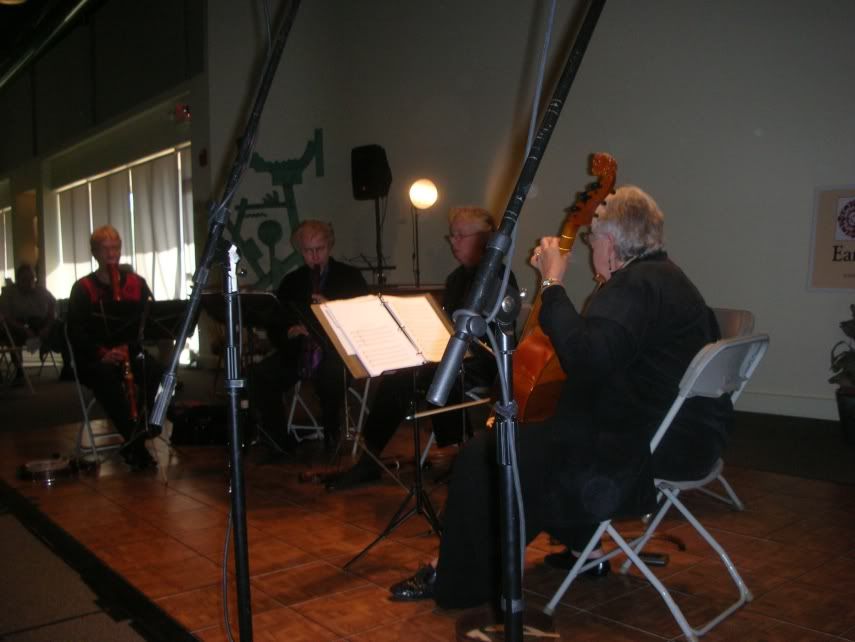
09. Rutgers Collegium Musicum: This vocal group performed neglected repertoire from the Renaissance Era. Prior to their set, the conductor stated much of this material was lost during The Reformation. The first song was noted as missing the tenor part, and ultimately constructed using contemporary data. As this example illustrates, musicians must act in the same capacity as archeologists ... instead of assembling fragments and shards of pottery, they assemble fragmentary musical pieces and utilize any evidence contemporaneous to the composition. The song itself exhibited a very interesting combination of various voices and levels leading up to a climactic ending. Another song followed.
Here is a photo of Rutgers Collegium Musicum:
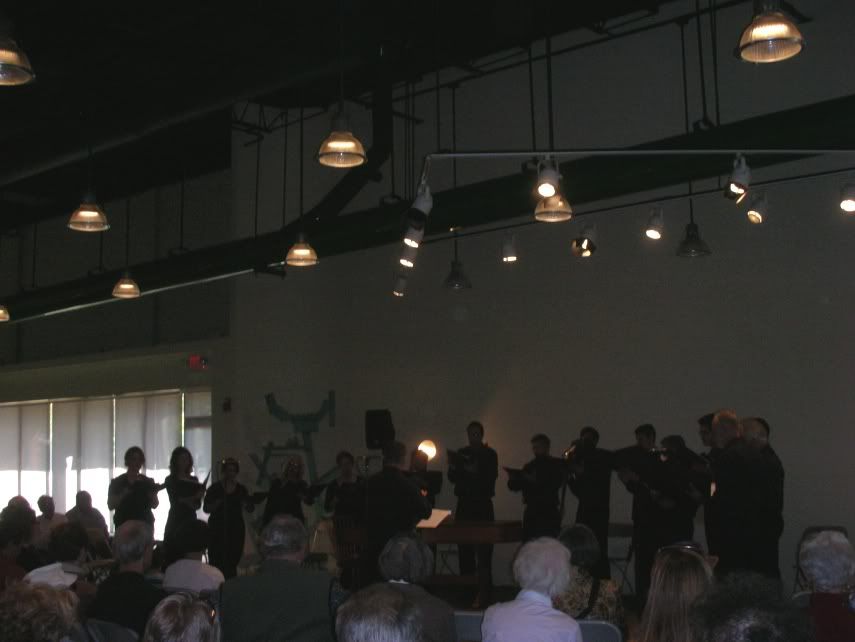
10. Gloria Consort: The theme of the band's set was related to the Courts of three Louis' - 14, 15 and 16. After providing some historic background, they began their set with a "Suite In E Minor" by a top court musician (I do not recall who exactly). It was performed with a viola, harpsichord and recorder. The next selection was a song played in a certain manner followed by how the song would be played in a French manner. This was followed by a brief story of a mystery that had spanned two centuries. In 1737 or 1747, a musician conspired to publish material (six sonatas) attributed to Antonio Vivaldi. The work fell into obscurity and was rediscovered around 1950 and consequently published again. In 1989, the Vivaldi Society in Italy exposed the work and declared it as not attributable to Vivaldi. This set the "Sonata #2". Poetry was read between each movement. The trio of instruments complemented each other making joyous and delightful sounds.
A video of Gloria Consort:
11. Mostly Motets: Mostly Motets performed music of fifteenth-century and sixteenth-century Spain. The audience was told of the discovery of a manuscript that once in the home of a Duke ... the discovery was quite significant. The first song was an anonymous number dedicated to Mary, The Blessed Mother. All of the vocalists were singing their respective parts and coming together as one. It was very calm yet engaging. If I remember correctly, the second song pertained to a woman who was angry with King Ferdinand and sought him out, but never found him. It was a truly exuberant piece and lively all the way to its abrupt ending. As the group carried on, I noticed some neat and distinctive low notes. Toward the end of their performance, the conductor told the crowd of a tune that pertained to a service that was taking place in a Cathedral. Someone took note of people gossiping and the individual expressed a desire to cut the tongues out of those engaging in such idle confabulation. Musically it was a happy-sounding number despite its subject matter which was predicated to one's annoyance and aggravation over gossiping.
Mostly Motets:
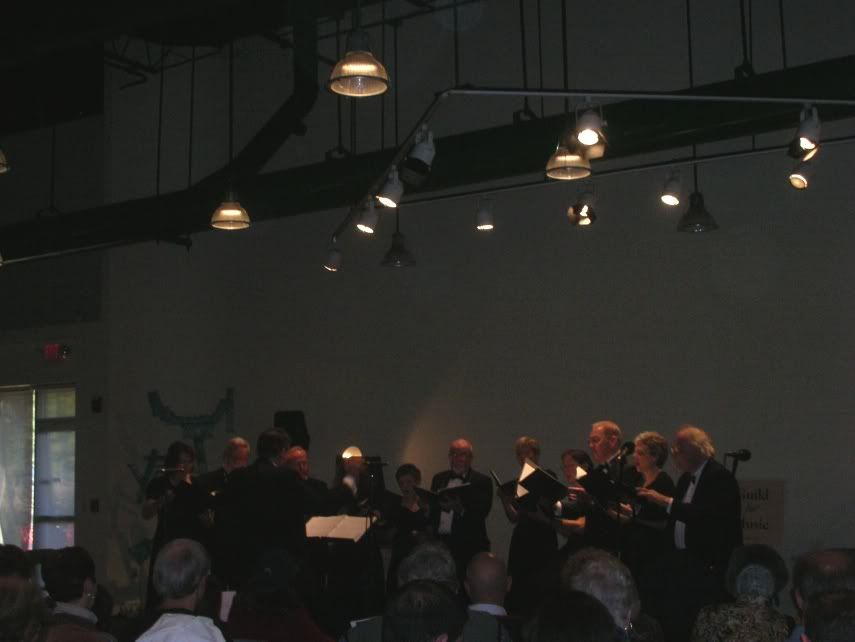
12: Practitioners Of Musick: The duo calling themselves the Practitioners Of Musick performed music from a manuscript belonging to New Jersey's own Francis Hopkinson (Signer of the Declaration Of Independence and the first American-born composer). The instruments used were the harpsichord and English and small flutes. First, they opened with an absolutely charming and happy tune. The second was an anonymous number that could quite possibly be attributed to a German composer. The third song was a Georg Friedrich Händel selection ... a wonderful piece performed via harpsichord only. After a short lesson, the fourth song featured the harpsichord and flute working remarkably-well together. Domenico Zippoli's "Pastoral" was next ... its delightful introduction and succeeding sounds have the ability to make a person smile.The final song was by an eighteenth-century French composer (named Claude) who was a music teacher to the daughter of Thomas Jefferson. It was a fast number ... so fast in fact that I do not recall ever hearing a harpsichord play a piece with such expeditious repetition. John was holding his own here (with the flute playing) as well.
A video sample and photo of the group:
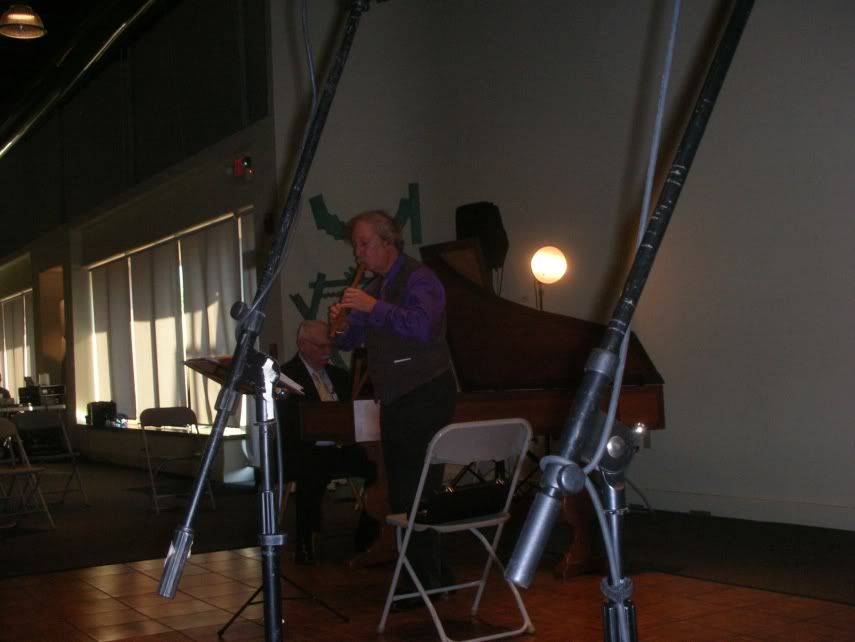
During the "Petting Zoo" portion of the program, I played a harpsichord and a krumhorn. Being the month of October,
when I sat down at the harpsichord, I thought it fitting to play the Halloween Theme (from the horror movie)!
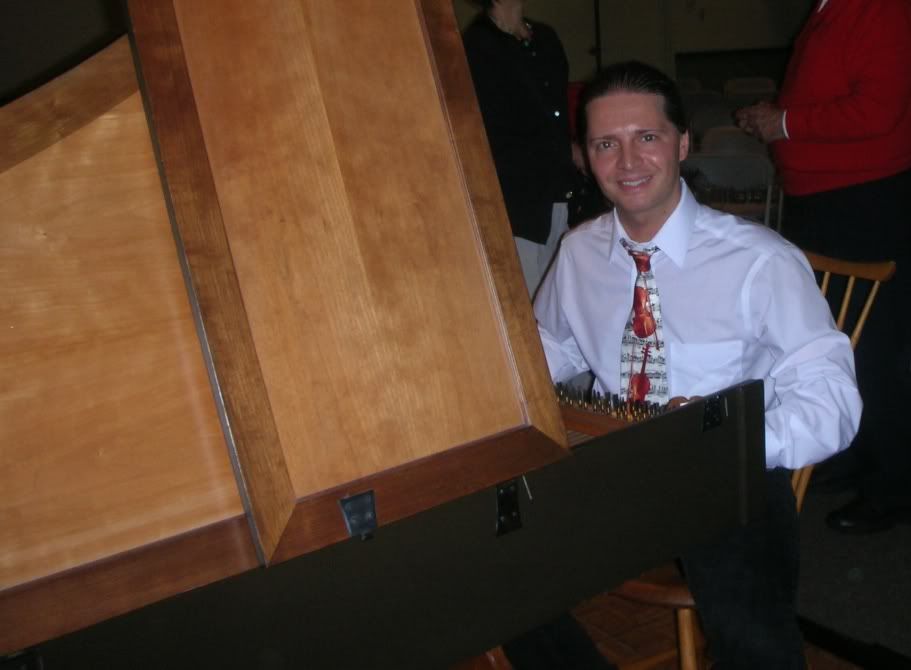
I took to the grounds after the gig to see what I could find ...
More peacock photos:
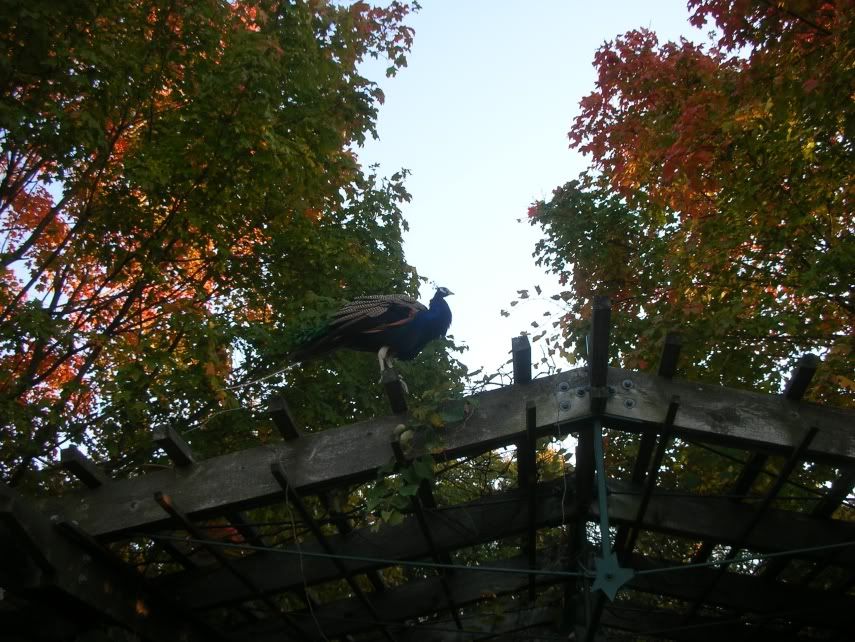
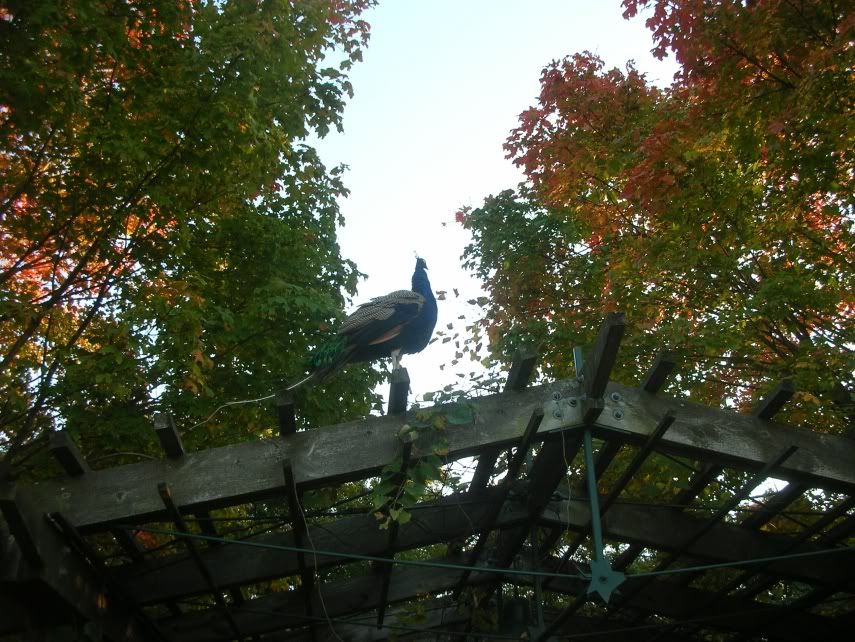
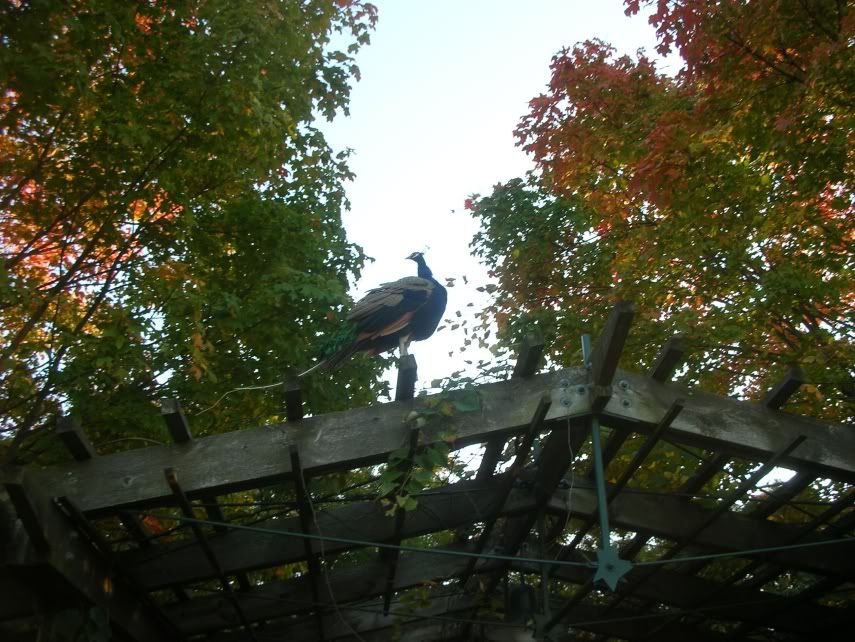
I later came upon this fine waterfall:
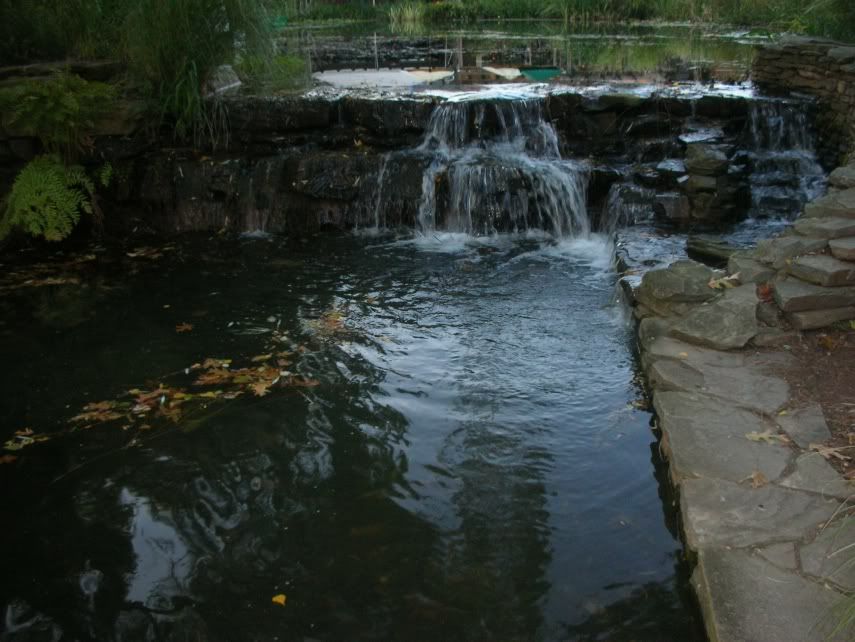
I thought it worthy of a brief recording:
I felt compelled to capture an image of this scenery as well:
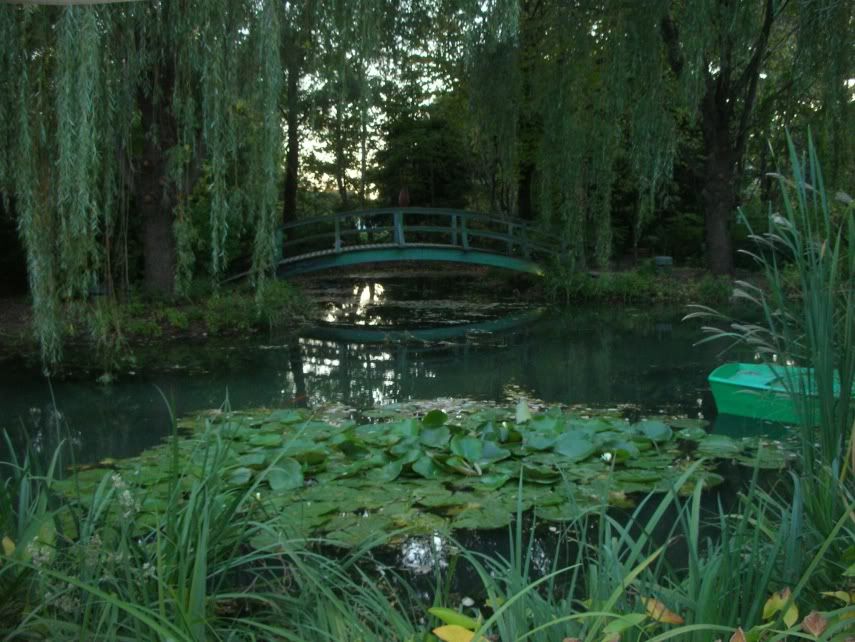
There you have it ... the music, the history, the peacocks and the scenery outside ... all memorable in their respective ways. I hope this review will help you consider attending the Early Music Fest in 2011. Future information will be posted at http://guildforearlymusic.org and http://www.groundsforsculpture.org.
------------------------------------------------------------------------------------------------------------------------------------------------------------------------------------------------------------------------------------------------------------




Great blog, Mike.
ReplyDeleteHi there. Thank you. I went to the Early Music Fest this year too, but did not have time to blog about it. Maybe next year ...
ReplyDelete